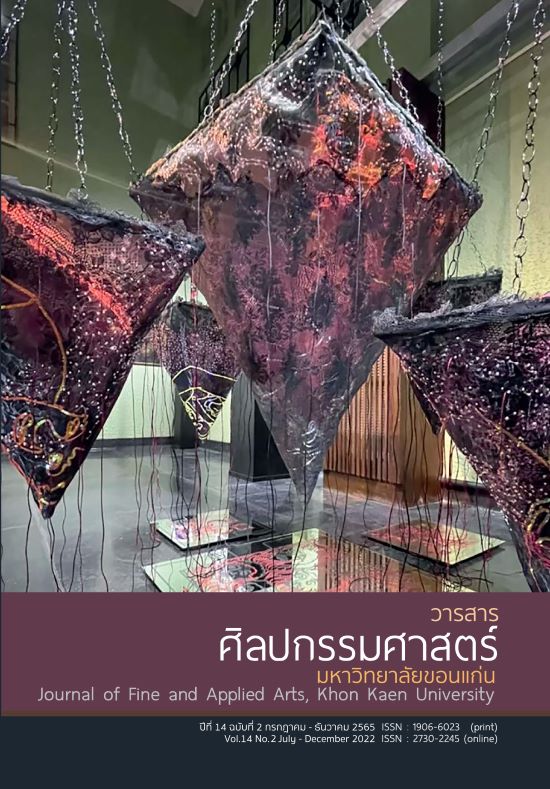The Development of Hernan Opera in Kaifeng city, Hernan, China
Main Article Content
Abstract
This article is part of a thesis titled “The Development of Henan Opera in Kaifeng City, Henan Province, China” with an aim to study the development of Henan Opera in Kaifeng City, Henan Province, China. The qualitative research methodology was employed in the study with emphasis on field data. The research instruments included questionnaires and interview questions. The data were collected from Henan Opera performers in Kaifeng City, China. The results are as follows:
The development of Henan Opera can be divided into three periods: 1) The period of the Republic of China or the period of the Old China from A.D. 1912 to A.D. 1949 during which the performers were illiterate, the performances were unsystematic, the show narratives were uninteresting, and no specific stages existed for the performances which were accompanied by ancient Chinese musical instruments, namely Yueqin, Sanxian, Bangzi, drums, gongs, and occasionally Banhu to replace Yueqin; 2) The period of the People’s Republic of China or the period of the New China from A.D. 1949 to A.D. 1966 during which scripts were written and stages were constructed for the performances which were adjusted to suit the audiences’ preferences, and other musical instruments were added, namely Erhu, Pipa, bamboo flute, Sheng and the Electone; and 3) The New Age from A.D. 2000 onwards in which the government provides support in terms of budget and public relations and the freedom of thought on various aspects is welcome, resulting in a variety of means for performances but still conserving the uniqueness of the traditional way of singing. Orchestras have been introduced to accompany the performances. The changes, therefore, could be said to embrace a harmony between the old and new ingredients.
Article Details

This work is licensed under a Creative Commons Attribution-NonCommercial-NoDerivatives 4.0 International License.
Content and information in articles published in the Journal of Fine and Applied Arts of Khon Kaen University is regarded as the opinion and sole responsibility of the author(s) directly; therefore, editors are not obliged to agree to or share any responsibility with regard to the content and information that appears within these articles.
All articles, information, content, image, etc. that have been published in the Journal of Fine and Applied Arts of Khon Kaen University is the copyright of the Journal of Fine and Appllied Arts of Khon Kaen University. Any person or organization who wishes to distribute all or parts of the articles for further dissemination or other usage must first receive permission from the Journal of Fine and Applied Arts of Khon Kaen University before proceeding to do so.
References
ศูนย์ข้อมูลเพื่อธุรกิจไทยในจีน. [ม.ป.ป.]. HENAN มณฑลเหอหนาน. ค้นเมื่อ 20 มกราคม 2564, จาก https://thaibizchina.com/country/henan/
Dehua, G. (2011). A study of Henan opera singing. Symphony, 2, 5-12.
Feng, L. (2018). A study on the characteristics of central plain folk culture of Yu opera from the perspective of communication. Journalism Research Guide, 11, 56.
Garé. (2018). The reference and integration of Chinese national vocal music: Foshan “Yu Song” and Yu Opera. Beauty and times (II), 3, 54.
Guo, Z. (2018). On the creative exploration of the diversification of the music creation of modern Henan Opera. Drama Family, 7, 135.
Han, D. (1999). The Chinese Henan Opera. Zhengzhou: Henan People Press.
Hao, J. (2003). Outline of the Banqiang structure of Yu Opera. Beijing: China Federation of Literature and Art Press.
Junfeng, K. (2010). On Chang Xiangyu and the Chinese National Spirit in Henan Opera Art. Journal of Chongqing University of Science and Technology (Social Science Edition), 12, 13-15.
Sun H. (2018). Development status and prospects of Henan Opera in Henan. Beijing : People’s Music Publisher.
Sun, T. (2016). Research on the inheritance and development of Chinese Opera. Beijing : Culture and Art Press.
Tan, J. (2002). An overview of Yu Opera Culture. Beijing : China Drama Publishing House.
Wang, J. (2004a). An introduction to the Aria music of Henan Opera. Beijing : People’s Music Publisher.
Wang, J. (2004b). An Introduction to the Singing Music of Henan Opera. Zhengzhou : People’s Music Press.


